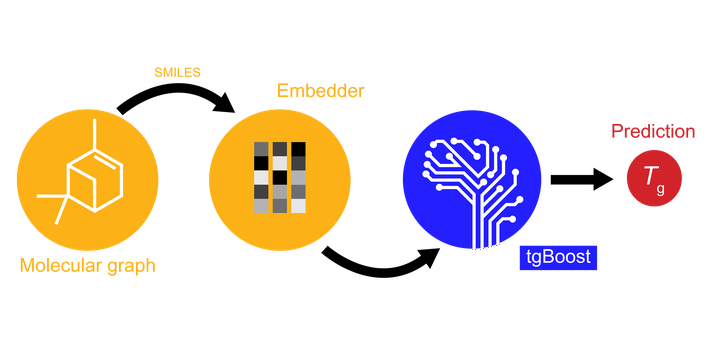Predicting glass transition temperature and melting point of organic compounds via machine learning and molecular embeddings

Abstract
Gas-particle partitioning of secondary organic aerosols is impacted by particle phase state and viscosity, which can be inferred from the glass transition temperature (T_g) of the constituting organic compounds. Several parametrizations were developed to predict T_g of organic compounds based on molecular properties and elemental composition, but they are subject to relatively large uncertainties as they do not account for molecular structure and functionality. Here we develop a new T_g prediction method powered by machine learning and “molecular embeddings”, which are unique numerical representations of chemical compounds that retain information on their structure, inter atomic connectivity and functionality. We have trained multiple state-of-the-art machine learning models on databases of experimental T_g of organic compounds and their corresponding molecular embeddings. The best prediction model is the tgBoost model built with an Extreme Gradient Boosting (XGBoost) regressor trained via a nested cross-validation method, reproducing experimental data very well with a mean absolute error of 18.3 K. It can also quantify the influence of number and location of functional groups on the T_g of organic molecules, while accounting for atom connectivity and predicting different T_g for compositional isomers. The tgBoost model suggests the following trend for sensitivity of T_g to functional group addition: –COOH (carboxylic acid) > –C(=O)OR (ester) ~ –OH (alcohol) > –C(=O)R (ketone) ~ –COR (ether) ~ –C(=O)H (aldehyde). We also developed a model to predict the melting point (Tm) of organic compounds by training a deep neural network on a large dataset of experimental Tm. The model performs reasonably well against the available dataset with a mean absolute error of 31.0 K. These new machine learning powered models can be applied to field and laboratory measurements as well as atmospheric aerosol models to predict the T_g and Tm of SOA compounds for evaluation of the phase state and viscosity of SOA..